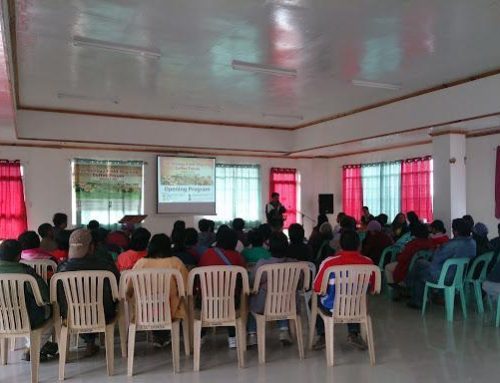In this Article

As a labor-intensive country, one of the major driving forces of Philippine agricultural development is technology. Aside from cost reduction, technology enables farmers to enhance the quality of their produce, discover effective and efficient farming techniques, and ultimately address the risks and challenges inherent in agriculture. The success of a technology, however, boils down to its dissemination and adoption at the field level. It is important to recognize that technology is deemed useless if farmers will not adopt it, which is why understanding a farmer’s behavior, particularly the factors affecting their decision to adopt a certain technology, is crucial.
In 2017, PCAARRD funded a program titled, “Role of Cooperatives in Technology Adoption for Improved Production and Market Efficiency in Dairy Buffalo and Coffee”. Dr. Agham Cuevas from the University of the Philippines Los Baños led this initiative to determine how cooperatives and other rural/community-based organizations (RBOs) affect technology adoption, and production and marketing efficiency, assess their effectiveness as platforms for innovation and technology transfer in the rural areas, and provide specific recommendations on how cooperatives/RBOs can enhance technology adoption.
Impact of Coop Membership in Technology Adoption and Production and Marketing Efficiency
The study showed that cooperatives/RBOs play an important role in stimulating the adoption of technology for the enhancement of production and marketing efficiencies. In fact, studies have shown that collectively, small-holder producers share information, pool resources, and distribute costs and risks among themselves to improve yield and productivity, which would not be possible if the smallholder farmer is working alone.
Among 380 respondents, 58 percent is a member of a cooperative/RBO. Findings show that members have a greater tendency to adopt technologies (52%) relative to non-members (40%). Farmers attribute this to the prioritization of cooperative members in the provision of agricultural inputs and technical services, attendance in various training, and linkages with other stakeholders. These provisions give members greater information, resources, and support. Likewise, membership was also found to significantly affect a farmer’s ability to maximize their output given a level of inputs (technical efficiency). This suggests that cooperative members are more productive than those who are not. It was also highlighted that members have greater marketing efficiency thanks to better selling prices, greater access to buyers, and better processing activities.
Institutional constraints
Cooperatives/RBOs identified the following institutional constraints which affect the performance of their industries:
Lack of information/Poor access to technologies
Inadequate equipment/facilities
High input and transportation costs
Poor access to credit
Limited market access
Challenges and Recommendations
Although cooperatives serve as instruments in both industries, they are still confronted with issues such as membership delinquency, lack of participation among members, poor planning, and lack and/or mismanagement of resources. Hence, policy incentives to form and join cooperatives must be provided and associations must be strengthened through management and developmental seminars for its members. Further, greater public investment is warranted for technology diffusion, enterprise development, and establishment of facilities and processing centers near the farmers.








